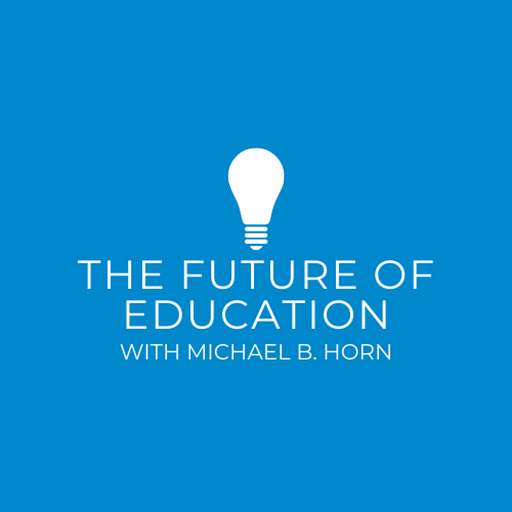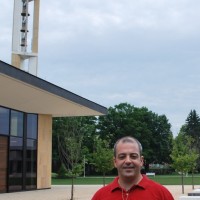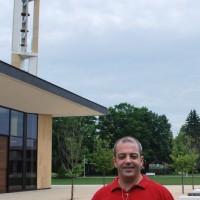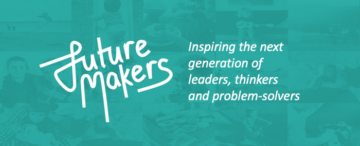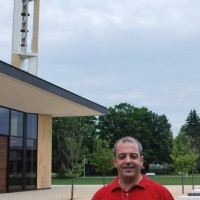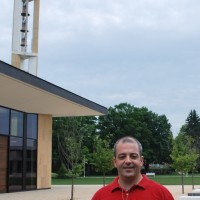August 10, 2023
What Defines a Next-Gen High School?
An item from a neo-liberal… This one is an item from a business professor with little direct experience in education, but who believes free market economic principles are the answer to education’s (and pretty much all other society’s social) problems.
Open in app or online As students, parents, and policymakers question the purpose of high schools, educators worldwide are building novel secondary school designs. What makes them “innovative,” however? In this conversation, Shadman Uddin, a master’s Student in Education at Stanford Graduate School of Education, offered that what makes a school innovative is less its adherence to a list of “novel” ideas, but more its outcomes against the things that matter most in society today, which includes knowledge acquisition, but also things like real-world applicability and social and emotional development.
Against that backdrop, Ken Montgomery, co-founder of Design Tech High, known as D-Tech, and Keeanna Warren, who just became the CEO of the Purdue Polytechnic High School network, joined me to talk about their school designs, in particular the importance of:
- helping students connect to something bigger than the school itself;
- offering competency-based learning pathways with a transformed assessment system;
- allowing students to find their creative purpose aligned to the common good;
- and building a more permeable school that is connected to the community and offers a deep sense of belonging.
They also talked about the role of AI (artificial intelligence) and the anxiety that their students feel around its emergence, as well as the barriers that arise to building school models that break the traditional molds—from policy to human capital. Ken and Keeanna also talked about how they’re seeing a lot of energy from parents for new types of schooling—and not the small “C” conservative force for the status quo that parents often fall into.
As always, subscribers can listen to the podcast, watch the conversation, or read the transcript.
Michael Horn: Welcome to the Future of Education where we are passionate about building a world in which all individuals can build their passions and fulfill their human potential. And to help us think about what that looks like and means today we’ve got three terrific guests in a format that we haven’t typically done in the Future of Education. Where we’re going to get to have a little bit of a conversation, a roundtable. We have Ken Montgomery, who I’ve known for many years. He’s the co-founder and executive director at Design Tech High known as d.tech to those of us in the world. We have Keeanna Warren, the assistant executive director of Purdue Polytechnic High School Network, which has gotten a lot of plaudits over the years and we’ll talk more about what they do there. And then the person bringing us all together, so to speak, is Shadman Uddin, who’s a master’s student in education at the Stanford Graduate School of Education.
And Shadman, I’m going to start with you as we launch into… We get four cycles, if you will, on this show. The first one is the morning warmup. And Shadman, you are bringing us all together because for one of your classes, you wrote this paper around next-gen school models, innovative schools, and we got talking as you were doing that. And one of your first questions was, what is an innovative school? If I remember this correctly.
I had COVID I think at the time, so I had brain fog. And I said, there’s a lot of places out there, the Canopy Project, whatever else, that have done this in a variety of ways. But it seems to me innovation… As my friend Rick Hess often says, no one goes into an Apple store and says, “Give me your most innovative iPhone.” They want an iPhone that accomplishes something for them. And innovation is a means not an ends. And so what if we looked at the outcomes and asked, okay. Well, what are the processes that are getting them? So I’m curious how that suggestion landed and what did you learn in the paper?
Morning Warmup
Shadman Uddin: Yeah, totally, Michael. And first of all, I just want to thank you for having us here today. It’s really exciting to be in conversation with both you, Ken and Keeanna. This has been a conversation that we’ve been having now for a few months through this research. It’s really great to just have this forum and discuss a lot of the findings that we had in the paper. So before we get really right to your question about how did we define next-gen, I just want to form around a little bit of the team that was behind this and how we came to do this research in and of itself. So it was myself, another couple of students at the Graduate School of Business here at Stanford named Rahul Adhikari and Nikita Sushilkumar. And we were all together in Gloria Lee’s class at the Stanford Graduate School of Business.
And all of us were united by this sense of excitement that we had, seeing all of the students and families asking for more innovation in high school across the US and even globally as well with Rahul and Nikita coming from India. And we had this big question of, how are these new innovations that are happening, or at least the ideas that hearing from new school leaders, how are they taking shape and are they successfully scaling? And so we posed that question to Gloria and she was like, “Why don’t we go ahead and do a whole research project around this? Let’s find out this answer together.”
And that really launched this amazing series of conversations. We spoke to over 26 different school leaders and ecosystem builders in what we defined or called the next-gen school space. And ultimately we learned a lot about what are some of the major barriers and what are also some of the key strategies that the highest performing next-gen schools are doing to kind of circumvent and keep growing amidst a lot of the barriers that they face.
But back to your first question of how did we even decide what was a next-gen or innovative school, and this was where we got caught up for a couple of months honestly. We saw the Transcend Canopy Project that tried to define next-gen by a various set of inputs that they quoted to be different tiers of innovation in next-gen. And what we realized is, one, we were most interested in the scaling strategies and how were the schools surviving and thriving. And we didn’t want to get so caught up in more of the intellectual and theoretical debate about what constitutes a next-gen innovation in a school. And so what we did is actually after speaking to you and then Kim Smith at Cambiar Education is we opted to do a different taxonomy or classification for how we thought about next-gen. And what we ended up deciding to do was an outcomes oriented framework.
So we thought about, okay, what are the outcomes that next-gen or innovative schools are trying to create within the high school landscape today? And then can we look and see what schools across the nation are performing well across those various indicators of outcomes? And so we leaned on Sir Ken Robinson’s five educational outcomes that he outlines in his book, Imagine If. Imagining a new way of school, a new way of education. And those five categories are academic, economic, so that’s job readiness, social, cultural, and personal. And we saw a number of schools doing different things across those different domains. Some schools focusing on primarily one outcome. But that then allowed us to compile a list of schools that we saw to be high performing in each of these categories. And then we went ahead and started reaching out to school leaders like Ken and Keeanna to learn more about how they were growing and how they were building out their visions.
Horn: Ken, let’s go to you on your school model. D.tech is one that I was out at the Bay Area actually still when you launched it. So I got to see some of it up close. But love for you to give the same sort of overview.
© 2023 Michael Horn
No comments yet.
RSS feed for comments on this post. TrackBack URI
- SEO Powered Content & PR Distribution. Get Amplified Today.
- PlatoData.Network Vertical Generative Ai. Empower Yourself. Access Here.
- PlatoAiStream. Web3 Intelligence. Knowledge Amplified. Access Here.
- PlatoESG. Automotive / EVs, Carbon, CleanTech, Energy, Environment, Solar, Waste Management. Access Here.
- PlatoHealth. Biotech and Clinical Trials Intelligence. Access Here.
- ChartPrime. Elevate your Trading Game with ChartPrime. Access Here.
- BlockOffsets. Modernizing Environmental Offset Ownership. Access Here.
- Source: https://virtualschooling.wordpress.com/2023/08/10/what-defines-a-next-gen-high-school/
- :has
- :is
- :not
- :where
- $UP
- 10
- 11
- 16
- 160
- 2023
- 24
- 26
- 33
- 40
- 8
- a
- About
- academic
- acquisition
- across
- actually
- After
- against
- ahead
- AI
- aligned
- All
- allowed
- also
- always
- amazing
- amidst
- an
- and
- Another
- answer
- Anxiety
- Apple
- ARE
- AREA
- arise
- around
- artificial
- artificial intelligence
- AS
- asked
- assessment
- Assistant
- At
- auto
- b
- back
- backdrop
- barriers
- Bay
- BE
- became
- because
- been
- before
- begin
- behind
- believes
- Big
- bigger
- Bit
- book
- both
- Brain
- Break
- Bringing
- build
- builders
- Building
- business
- but
- by
- called
- came
- CAN
- Canopy
- capital
- categories
- Category
- caught
- Center
- ceo
- class
- classes
- classification
- clear
- Close
- Co-founder
- coming
- comment
- comments
- Common
- community
- Connect
- connected
- conservative
- Conversation
- conversations
- correctly
- Couple
- Covid
- create
- Creative
- cultural
- curious
- cycles
- data
- debate
- decide
- Deciding
- deep
- define
- defined
- Defines
- Design
- designs
- Development
- DID
- different
- direct
- Director
- discuss
- do
- doing
- domains
- done
- Dont
- each
- Economic
- ecosystem
- Education
- educational
- educators
- else
- emergence
- emotional
- end
- ends
- energy
- Ether (ETH)
- Even
- Excitement
- exciting
- executive
- Executive Director
- experience
- Face
- Fall
- families
- feedback
- feel
- few
- Find
- findings
- First
- five
- focusing
- Fog
- For
- Force
- form
- format
- Forum
- four
- Framework
- Free
- friend
- from
- Fulfill
- future
- get
- getting
- Give
- Globally
- Go
- Goes
- going
- good
- graduate
- great
- Growing
- guests
- had
- Happening
- Have
- having
- he
- hearing
- help
- here
- High
- high schools
- highest
- his
- Honestly
- How
- However
- HTTPS
- human
- i
- ideas
- identifier
- if
- imagine
- importance
- in
- includes
- india
- Indicators
- individuals
- Innovation
- innovations
- innovative
- inputs
- intellectual
- Intelligence
- interested
- into
- iPhone
- IT
- ITS
- itself
- Job
- joined
- just
- Keep
- Key
- Kim
- Kind
- knowledge
- known
- landscape
- launch
- launched
- leaders
- LEARN
- learned
- learning
- least
- less
- like
- List
- little
- Look
- looked
- LOOKS
- Lot
- love
- major
- MAKES
- many
- Market
- master’s
- Matter
- me
- means
- Meta
- Michael
- model
- models
- months
- more
- morning
- most
- much
- my
- Named
- nation
- network
- New
- no
- novel
- now
- number
- of
- offered
- Offers
- often
- Okay
- on
- ONE
- or
- Other
- out
- Outcome
- outcomes
- outlines
- over
- overview
- Paper
- parents
- particular
- passionate
- performing
- person
- personal
- Places
- plato
- Plato Data Intelligence
- PlatoData
- podcast
- policy
- policymakers
- Post
- potential
- presentation
- pretty
- primarily
- principles
- problems
- processes
- Professor
- project
- purpose
- question
- Questions
- reaching
- Read
- Readiness
- real world
- realized
- really
- reduce
- remember
- research
- resource
- right
- Role
- Said
- same
- saw
- says
- scaling
- School
- Schools
- secondary
- see
- seeing
- seems
- sense
- Series
- set
- Shape
- she
- show
- Simple
- Sir
- site
- small
- So
- Social
- Society
- some
- something
- Space
- spam
- speak
- speaking
- stanford
- start
- started
- Status
- Still
- store
- strategies
- Student
- Students
- subscribers
- Successfully
- syndication
- system
- TAG
- taking
- Talk
- talking
- taxonomy
- team
- tech
- than
- thank
- that
- The
- The Future
- the world
- their
- Them
- then
- theoretical
- There.
- These
- they
- things
- Think
- this
- those
- thought
- three
- thriving
- Through
- time
- to
- today
- together
- TOTALLY
- traditional
- Transcript
- transformed
- tried
- types
- typically
- Ultimately
- under
- United
- us
- uses
- variety
- various
- visions
- want
- warren
- was
- Watch
- Way..
- ways
- we
- welcome
- WELL
- went
- were
- What
- What is
- whatever
- when
- which
- WHO
- whole
- will
- with
- within
- WordPress
- world
- worldwide
- wrote
- years
- yet
- you
- Your
- zephyrnet

